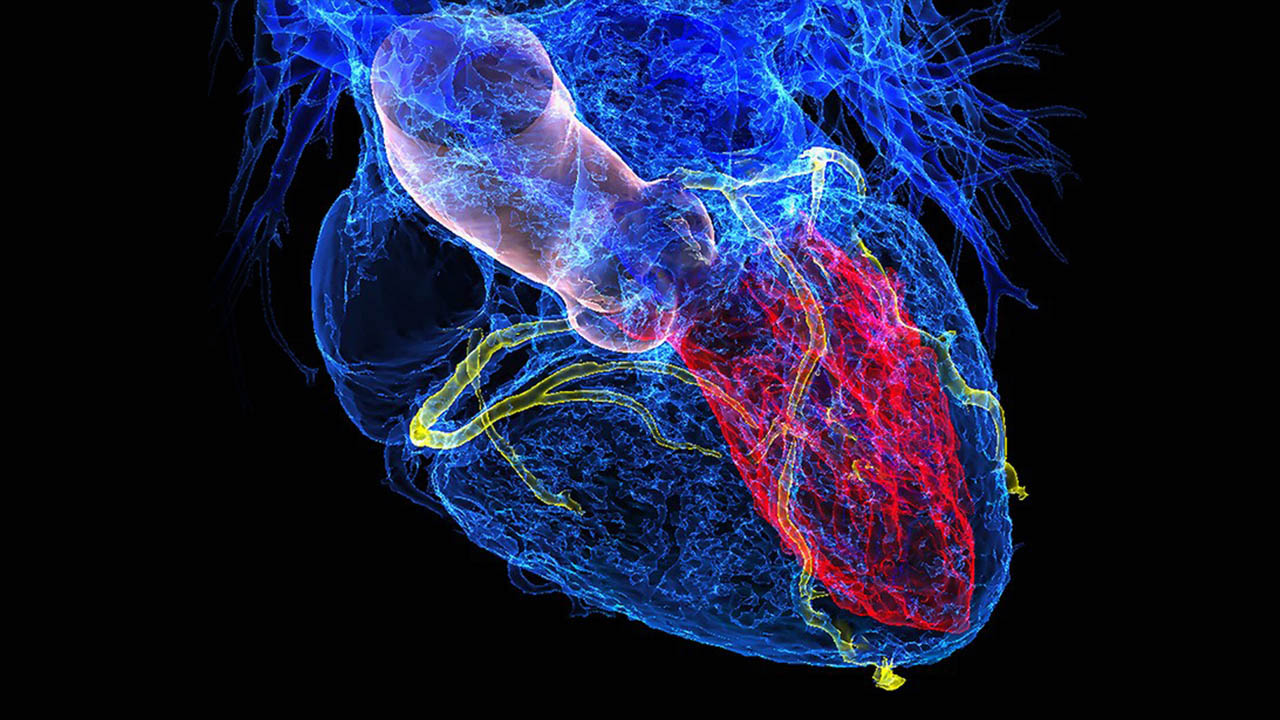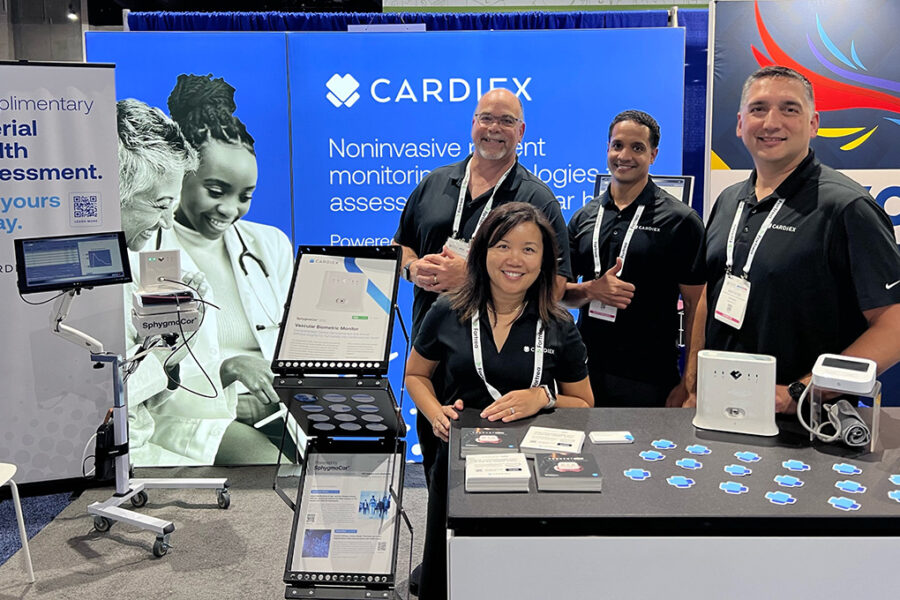
COVID-19 and Heart Damage: Latest Studies
August 31, 2020
Three things women should know about their heart health
March 16, 2021What’s a Better Indicator of Cardiovascular Risk—Coronary Calcium or Arterial Stiffness?
When it comes to determining overall cardiovascular health and the risk for cardiovascular disease, which factors are the most predictive of outcomes? This key question is routinely asked by both patients and clinicians as they maneuver the wealth of information on this topic. The question has gained new relevance in the current climate of COVID-19 and its apparent role in cardiovascular health. Two of the numerous factors that need to be understood and appreciated in this regard are coronary calcium and arterial stiffness.
What is a coronary calcium scan?
A coronary calcium scan is also known as a calcium scan test or cardiac CT for calcium scoring. It uses technology called multi-detector row or multi-slice computed tomography (CT) to scan the coronary arteries, the blood vessels that provide oxygen-rich blood to the heart. The resulting value indicates the degree of plaque accumulation in the walls of these blood vessels. Plaque is composed of calcium, fat, and other substances that can build up and obstruct or close the arteries. Calcium in the arteries is just one possible sign of heart disease risk. A high score on a calcium scan (aka, coronary artery calcium [CAC] score, heart scan, calcium score, or Agatston score) can mean someone has a greater chance of experiencing a heart attack than someone who has a low score.
Coronary calcium scores are rated as follows: (1)
- Zero: Low risk of heart attack.
- 1 to 10: A small amount of plaque is present. The risk of having heart disease is less than 10 percent and heart attack risk is low.
- 11 to 100: Some plaque is present. There’s a mild risk of heart disease and moderate chance of heart attack.
- 101 to 400: Moderate amount of plaque accumulated. Heart disease is present, and plaque may be obstructing an artery. Heart attack risk is moderate to high.
- More than 400: Large amount of plaque. Chance that plaque is blocking an artery is more than 90 percent and the chance of heart attack is high.
Your calcium score is calculated based on the amount of plaque noted in your CT scan. This value may be converted to a percentile rank that is based on your gender and age.
What you should know about a coronary calcium scan
Your score on a coronary calcium scan may prompt your healthcare provider to suggest you make lifestyle changes (e.g., more exercise, better nutrition, weight loss, quit smoking) and begin a medication regimen for high blood pressure and/or high cholesterol. These suggestions are generally recommended for many people and are not specific for those who may have a high coronary calcium score.
In fact, a coronary calcium scan has numerous limitations. For example:
- This test is not helpful for individuals who have a low or high risk of heart disease. Only people who are at medium risk for heart disease can benefit from undergoing the scan. In most cases, the results of your physical exam and tests for cholesterol, diabetes, and blood pressures, as well as your gender, age, and race provide enough information for doctors to determine your risk for heart disease.
- It’s possible to get a high score on the test even if your arteries don’t have any indication of heart disease. This false positive could result in your doctor ordering more tests or treatments that you don’t need. (2)
- It’s possible to have arteries with early signs of heart disease that don’t have calcium buildup. Therefore, you could get a low calcium score and still be at significant risk for heart disease.
- Many health plans and insurance companies do not pay for coronary calcium scans because they are considered to be experimental. Therefore, expect to pay about $100 to $400 out of pocket for the scan.(3)
- Overall, the American College of Cardiology and the American Heart Association may not recommend this scan for men younger than 40 and women younger than 50 or individuals who have symptoms or a diagnosis of coronary artery disease because the results don’t help physicians better understand the disease. (4)
If you decide to get a coronary calcium scan, it takes about 20 to 30 seconds for the actual scan. However, overall time from start to finish, including prep, is 10 to 15 minutes.
What is arterial stiffness?
Over time, the walls of large arteries lose elasticity and flexibility, resulting in increased arterial stiffness. The development of arterial stiffness is due in large part to a deterioration of the integrity of the structural components within the walls, all of which respond to the pressure of blood flow. Those components include muscle, elastin fibers, and collagen fibers. Arterial stiffness also is associated with atherosclerosis, or hardening of the arteries. In fact, arterial stiffness rivals hypercholesterolemia as a risk factor for artherosclerosis.(5,6)
Research shows that arterial stiffening is a precursor to high blood pressure and so can be used to predict future cardiovascular episodes (7). It also damages the capillaries that supply nourishment to organs, which can ultimately result in organ damage, including heart attack, kidney failure, and dementia.(8,9) Fortunately, arterial stiffness is reversible, which gives clinicians and patients an opportunity to prevent development of hypertension and other related conditions that involve narrowing of the arteries.(10)
Measuring arterial stiffness
Information about the stiffness of the arteries can be acquired through several different invasive and noninvasive measurements. This includes assessing an individual’s central blood pressure waveform, which can be done in several ways.
One approach utilizes a tonometer, a handheld wand-like device with a pressure transducer that is placed on the skin over the radial artery pulse at the wrist. This measurement first involves taking a patient’s cuff blood pressure followed by using the tonometer to acquire the shape of the pulse. The central blood pressure in the ascending aorta is then calculated using a validated mathematical process. Another approach uses a regular blood pressure cuff that is attached to a device that records pulse waveforms from the arm and provides central blood pressure values.
An example of the latter device and the most advanced clinical and noninvasive way to diagnose arterial stiffness is use of ATCOR’s SphygmoCor® XCEL. This device measures central arterial blood pressure and pulse wave velocity as well as provides assessment of arterial stiffness using waveform analysis, which includes augmentation index. This index is an indication of the additional pressure the heart must exert, which results in more stress on the heart. This excess pressure is typically due to increased arterial stiffness and pressure wave reflections, a well-established indicator of long-term cardiovascular risk (11,12).
Bottom line
Use of central blood pressure waveform analysis, measured by an easy to use and operator independent device, offers a more complete assessment of how the arteries are impacting an individual’s cardiovascular health. Thus, clinicians can get the big picture of how a patient’s blood pressure may impact and potentially damage the heart, brain, arteries, and kidneys. A coronary calcium scan measures calcification at the heart only—and it utilizes an imaging technology, operated by trained health professional, that exposes the patient to radiation—which may pose an unnecessary health risk in and of itself. This information is of limited use and has various drawbacks, as already noted, and is thus not realistically indicative of an individual’s true cardiovascular risk. Moreover, arterial stiffness is the gold standard for assessing cardiovascular risk and is used by leading hospitals and specialist clinicians all lover the world.
………………
References
1.University of Maryland Medical Center. Cardiac calcium scoring (heart scan).
2. Otton J, Yu C, McCrohon J, Sammel N, Feneley M. Accuracy and clinical outcomes of computed tomography coronary angiography in the presence of a high calcium score. Journal of the American College of Cardiology 2013; 61 (10)
3.University of Wisconsin Madison. Coronary calcium scan: should I have this test?
4.Mayo Clinic. Heart scan (coronary calcium scan).
5.Palombo C, Kozakova M. Arterial stiffness, atherosclerosis and cardiovascular risk: Pathophysiologic mechanisms and emerging clinical indications. Vascular Pharmacology 2016; 77:1-7
6.van Popele NM et al. Association between arterial stiffness and atherosclerosis: the Rotterdam Study. Stroke 2001; 32(2):454-60.
7.Liao D et al. Arterial Stiffness and the Development of Hypertension: The ARIC Study. Hypertension 1999; 34(2): 201-206
8.Thorin-Trescases N, Thorin E. Lifelong cyclic mechanical strain promotes large elastic artery stiffening: increased pulse pressure and old age-related organ failure. Canadian Journal of Cardiology 2016; 32(5): 624-33
9.Safar ME et al. Pulse pressure, arterial stiffness, and end-organ damage. Current Hypertension Reports 2012 Aug; 14(4): 339-44
10.Oh YS. Arterial stiffness and hypertension. Clinical Hypertension 2018; 24:17
11. O’Rourke M, Adji A. An updated clinical primer on large artery mechanics: implications of pulse waveform analysis and arterial tonometry. Current Opinion in Cardiology 2005 ; 20:275-281
12. Roman M et al. High Central Pulse Pressure Is Independently Associated With Adverse Cardiovascular Outcome: The Strong Heart Study. Journal of the American College of Cardiology 2009; 54 (18): 1730-1734




